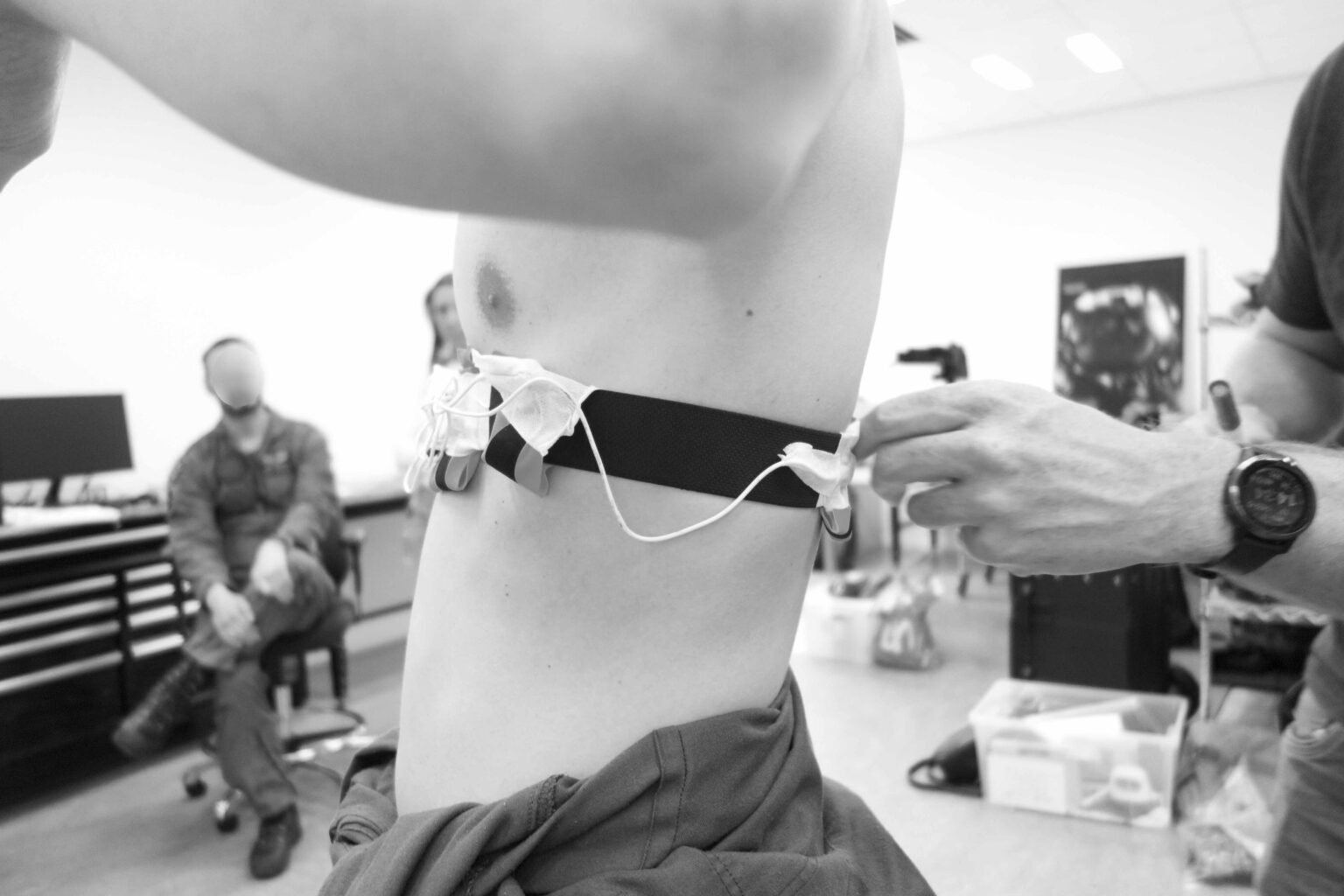Electrodes for wearables
How to integrate the right electrode into your wearable?
At Elitac Wearables, we have sourced and tested many of these ‘dry’ or ‘textile-based’ electrodes in the market. Together with our partner research institutes, we regularly check the market and perform tests. We have a selection of the best options, with most durable and accurate (low noise signal) electrodes out there.
Curious about what we can do with electrodes at Elitac Wearables? Click on of the buttons bellow to dive into the electrifying world of dry electrodes and more!
Are are looking to develop a wearable, and want to make use of all the benefits of dry electrodes, and our company’s knowledge and experience, saving you time and costs in your development? Contact us to find out more!
In-depth knowledge & research
Elitac Wearables goes further than selecting and testing electrodes. We research:
- Attachment and integration of electrodes to a wearable.
- Positioning the electrodes on the body to achieve a good signal quality with little noise caused by movement of the wearer.
- Techniques to keep the electrodes in place and pressed to the body, even during extreme activities.
- Wiring techniques that connect the electrodes with the ECG recorder, including noise reduction and even shielding.
- Modularity or easy (dis-)connecting the recorder to the wearable.
In addition, we test the durability of the wearable that includes these technologies, to make sure that it does not break when it is worn or washed.

Electrodes in Wearables
Electrodes used in consumer electronics are mostly used for measuring heart rate (HR), electrocardiogram (ECG), stress (heart rate variability or HRV), muscle activity (EMG), and brain activity (EEG). In addition, they are used to stimulate muscles (EMS).
Best known to the general public are electrodes used in sports and medical products to measure heart rate and ECG, respectively. The ECG looks at the full image or time line of the electrical heart signal. The heart rate is the number of heart beats per minute that are visible in the ECG signal.
Medical ECG electrodes usually are single-use adhesive patches. They are uncomfortable to use, as they are ‘glued’ to the skin. The glue also includes a gel, needed for the electronic connection. This is also why these electrodes are often referred to as ‘wet electrodes’.
In sports, graphite based electrodes are used, which are not sticky and do not make use of a conductive gel. These are therefore referred to as ‘dry electrodes’.
Read more background information in our blog post about electrodes for wearables.
Interested in learning more about electrodes for wearables?

How to select the right electrodes?
Over the last few years, several companies and research institutes have focused their R&D efforts on overcoming the problems of noise artefacts, skin impedance (connectivity), comfort, and washability of dry electrodes.
A handful of them have succeeded in developing easy-to-integrate, high quality signal, comfortable, and sometimes even washable electrodes! Of course, each of them have their own advantages and disadvantages, depending on how you want to use them and for what use case.
We have the technical know-how, which to use when, and what to look for. We even have the samples in house to quickly prototype your wearable, for example during our Wearables workshops!
The benefits of ‘dry’ electrodes
What are ‘dry’ electrodes and why are they interesting? Dry electrodes, as mentioned before, are named like that because they don’t need (additional) gels or fluids to make them work (make proper contact with the skin). They can even (almost) feel like textile and comfortable to the skin or (partially) detach from the skin. Next to that, this also often implies they can be reused, making them more suitable for longer and more frequent usage, even daily and at home.
But, of course there is a catch. Using non-adhesive electrodes, can have a negative influence on the signal quality. This happens because the electrode can slightly move across the skin or (partially) detach from the skin. Which leads to ‘noise’ or ‘movement artifacts’. This means that the measured signal is less easy to read.
- Comfortable
- Easy to use
- Reusable
- Washable


Alternative technologies to measure Heart Rate and Heart Rate Variability (HRV)
Next to electrodes, you could also use a photoplethysmogram (PPG) sensor to measure heart rate. A PPG sensor can also measure blood oxygen (also referred to as ‘blood oxygen saturation’ and ‘SpO2’), stress (HRV), blood pressure and more.
PPG sensors are those red and green LED lights on the back of your smart watch, or those little plastic devices you get clamped on your finger when hospitalised. The big advantage of these sensors over electrodes is that they are simple, small, reliable and inexpensive. And, they can be worn away from the chest area, like on the wrist or even the ear.
Want to discuss which technology is right for your wearable development?

